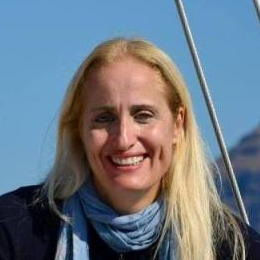Active Faulting and Seismicity
A special issue of GeoHazards (ISSN 2624-795X).
Deadline for manuscript submissions: closed (11 December 2023) | Viewed by 7200
Special Issue Editors
Interests: tectonics; geodynamics; natural disasters; marine geodynamics; crustal deformation combining on-shore and off-shore structures
Special Issues, Collections and Topics in MDPI journals
Interests: seafloor mapping; tectonics; submarine volcanism; 3D reconstruction; physical geography; morpho-geodynamics
Special Issues, Collections and Topics in MDPI journals
Interests: tectonic; seismotectonics
Interests: geodynamics; structural geology; marine geology and geophysics; geo-hazard; extensional and compressive tectonics
Special Issues, Collections and Topics in MDPI journals
Special Issue Information
Dear Colleagues,
The relation between active faulting and seismicity has been investigated mainly since the 1980s, when large earthquakes of magnitude >6 have re-activated neotectonic faults with measurable displacements on the fault planes. Soon after, empirical relationships have been elaborated between the earthquake magnitude and the fault length or the fault throw. Several dating techniques such as trenching, Cl36 dating, etc., have resulted in the estimation of throw rate or slip rate on each fault. The correlation of slip rates with uplift/subsidence rates, erosion rates and GPS rates have increased our understanding of the overall active deformation of a region. A parallel process has been developed for active faulting and seismicity offshore with different techniques, combining detailed digital bathymetric data and litho-seismic profiles. Thus, the basic parameters of fault length, fault throw and their impact on the sea bed morphology have been determined. The dating of the off-shore faults either by drilling or by the sedimentation rates obtained from shallow coring resulted in the estimation of slip rates. However, the study of active faulting in areas combining on-shore and off-shore faults is not common in the literature, as the two groups (terrestrial and marine) usually work and collaborate separately.
The Special Issue aims to bring the two groups of experts on active faulting and seismicity together and thus, we invite papers on active faulting and seismicity: 1) for areas on-shore, 2) for areas off-shore, 3) for areas combining both on-shore and off-shore domains.
Prof. Dr. Dimitrios Papanikolaou
Dr. Paraskevi Nomikou
Prof. Dr. Nathalie Feuillet
Dr. Maria Filomena Loreto
Guest Editors
Manuscript Submission Information
Manuscripts should be submitted online at www.mdpi.com by registering and logging in to this website. Once you are registered, click here to go to the submission form. Manuscripts can be submitted until the deadline. All submissions that pass pre-check are peer-reviewed. Accepted papers will be published continuously in the journal (as soon as accepted) and will be listed together on the special issue website. Research articles, review articles as well as short communications are invited. For planned papers, a title and short abstract (about 100 words) can be sent to the Editorial Office for announcement on this website.
Submitted manuscripts should not have been published previously, nor be under consideration for publication elsewhere (except conference proceedings papers). All manuscripts are thoroughly refereed through a single-blind peer-review process. A guide for authors and other relevant information for submission of manuscripts is available on the Instructions for Authors page. GeoHazards is an international peer-reviewed open access quarterly journal published by MDPI.
Please visit the Instructions for Authors page before submitting a manuscript. The Article Processing Charge (APC) for publication in this open access journal is 1000 CHF (Swiss Francs). Submitted papers should be well formatted and use good English. Authors may use MDPI's English editing service prior to publication or during author revisions.
Keywords
- maps of active faults
- fault throw and slip rate
- techniques of fault dating
- seismic history of faults
- integration of on-shore and off-shore faults
- growth faulting and slip rate
- slip rate and uplift/subsidence, erosion, sedimentation, GPS rate
- seismic activity of marginal faults of basins
- seismic hazard maps
- active faulting and focal mechanisms
Benefits of Publishing in a Special Issue
- Ease of navigation: Grouping papers by topic helps scholars navigate broad scope journals more efficiently.
- Greater discoverability: Special Issues support the reach and impact of scientific research. Articles in Special Issues are more discoverable and cited more frequently.
- Expansion of research network: Special Issues facilitate connections among authors, fostering scientific collaborations.
- External promotion: Articles in Special Issues are often promoted through the journal's social media, increasing their visibility.
- e-Book format: Special Issues with more than 10 articles can be published as dedicated e-books, ensuring wide and rapid dissemination.
Further information on MDPI's Special Issue polices can be found here.








